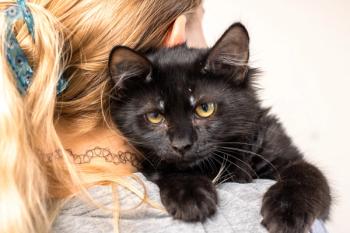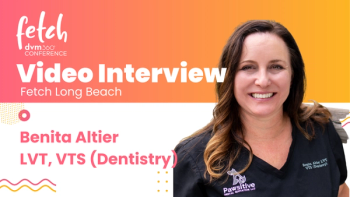
- Vetted February 2020
- Volume 115
- Issue 2
How to be a veterinary social media superstar
Where does your veterinary practice need to be online? How much work will this take? Is it worth it? We asked practice owners, social media and marketing team members and other experts for the answers.
Rawpixel.com/stock.adobe.com
There's no denying that social media is an invaluable marketing tool for veterinary practices. In fact, most would argue that it's vital for success today. But anyone with a Facebook page or a Twitter account knows that reaching peak popularity is not as simple as sharing a photo or adding a hashtag. So how can you run a successful practice while managing winning social media pages?
We talked to six veterinary social media mavens who've proven they have the know-how to navigate the intricacies of social media and create content that sparks engagement. Here's what they had to say.
Who's who
Laurie Hess, DVM, DABVP (avian practice)
Dr. Hess owns Veterinary Center for Birds and Exotics in Bedford Hills, New York, and is the author of
Laurie Hess
Karin Kandur
Kandur is a marketing manager for Compassion-First Pet Hospitals and manages the social media accounts for multiple New Jersey veterinary hospitals, including Red Bank Veterinary Hospitals in Hillsborough, Mount Laurel and Tinton Falls.
Red Bank Veterinary Hospitals Facebook
Kate Lawrence
Lawrence is marketing coordinator for Gulf Coast Veterinary Specialists in Houston, Texas.
Gulf Coast Veterinary Specialists Facebook:
Bill Schroeder
Schroeder is vice president of InTouch Practice Communications, a full-service marketing agency dedicated to veterinarians.
Facebook:
Stephanie Serraino
Serraino is a marketing manager for Compassion-First Pet Hospitals and manages the social media accounts for multiple veterinary hospitals, including the two CARE Center locations in Cincinnati and Dayton in Ohio.
Facebook:
Ernie Ward, DVM
Dr. Ward is a well-known veterinarian, speaker, author and founder of the
Facebook:
Which social media platform should veterinary practices be using?
Ernie Ward, DVM: The four main social media platforms today are Facebook, Instagram, YouTube and Twitter-almost in that order as far as reaching pet owners at large. That's pretty much where you want to be.
Bill Schroeder: The most important platform is still Facebook because of the channel's reach and a veterinary practice's ability to target their audience. Close behind are Instagram and YouTube. (Editor's note: Bill shared with us big algorithm changes back in May.
Think you can't do video?
It doesn't have to be big-budget filmmaking to make it on YouTube, people.
How has social media had a positive impact on the veterinary hospitals you work for?
Karin Kandur: Social media lets us showcase the care we provide at
Kate Lawrence: Social media is one of the most important ways we communicate today. Businesses that ignore or underuse social media do a disservice to their hospitals and clients. Social media allows us to keep clients informed about our hospital, such as providing our new location when we were flooded during Hurricane Harvey last year. It also lets us engage with clients through stories of actual patients, grow clients' knowledge by sharing important health information and fun facts about pets and our hospital staff, and illustrate our state-of-the-art technology.
But what do I write?
Need help coming up with veterinary-client-facing copy for your social media channel. Start brainstorming at
Stephanie Serraino: Social media allows us to connect with our community by sharing stories of pet loss, love, survival and advanced veterinary care. We also get to share safety tips, patient updates, staff events and achievements as well as how we give back to our community. In turn, our community gets to share with us how these animals make their lives better.
What type of content drives the most social engagement?
Schroeder: Authentic content that demonstrates the practice's brand. Tell the stories of your clients and let pet owners feel the social climate of the practice. Use pictures,
Kandur: Several types of content yield positive feedback for us: practice and community service news (such as blood drives and in-house fundraisers for causes such as breast cancer awareness), meet-the-technician features, patient profiles showcasing success stories and interesting cases, personal stories from staff members, and staff photos that show our dedication to caring for pets, such as when they came in during a blizzard.
Laurie Hess, DVM: Definitely pictures-we take a lot of pictures. We have a photo release form that we ask clients to sign when they come in, and most people are pretty receptive to doing that. We then keep a library of our interesting photos so we can use them as needed. (Editor's note: Check out her
Serraino: We find that success stories about critically ill patients do the best. A few years ago, CARE Center posted
Are blogs a necessary part of social media marketing?
Dr. Ward: You need to own your content, and there's no better content to own than blog posts. [From them,] you can link to Facebook memes, Instagram photos and YouTube videos.
Schroeder: Absolutely. Not only are blogs a great way to share information, but they have tremendous
Do you schedule content in advance?
Dr. Ward: The first thing to do is look out a month ahead to see whether there is a day or a celebration, such as
Dr. Hess: Seasons and holidays drive a lot of what we post. Around holidays and school vacations, for example, there's an increase in boarding, so we schedule posts about boarding during those times. Also, certain holidays drive particular kinds of posts. For example,
How do you react to negative feedback online?
Dr. Ward: Being able to deal with negativity on social media
Kandur: I think the biggest downside to social media, including review sites such as
Complaining … or bullying?
Sometimes internet reviews turn into campaigns of abuse by not just an upset client but all the client's family, friends and social media contacts. We went deep into this topic in a recent dvm360 Leadership Challenge at
Dr. Hess: Striking out or being negative in your response never helps. I always try to
What's your No. 1 piece of social media advice?
Dr. Hess: It's important that posts have some regularity. We've created themes for certain days of the week where people expect certain things-Monday is Mammal Monday and Tuesday is Tank Tuesday [highlighting pets that call aquariums and terrariums home]. Related to these themes, we might offer a discount or a special gift because someone brought their ferret in on a Friday because they saw a Ferret Friday post. Once every week or two, we also post a “Did you know?” video where we mention a cool fact related to an exotic animal. Team members take turns creating these posts so people begin to recognize our staff while learning something interesting.
Schroeder: Bottom line: Create good, honest content that helps your audience, and interact naturally.
Articles in this issue
about 6 years ago
4 ways to help clients pay for veterinary careabout 6 years ago
Hospital design: What Bailey taught meabout 6 years ago
The microbiota in veterinary GI diseaseabout 6 years ago
Find marketing distasteful? Get over it with this simple approachalmost 7 years ago
Journal Scan: What's the power behind catnip?Newsletter
From exam room tips to practice management insights, get trusted veterinary news delivered straight to your inbox—subscribe to dvm360.




